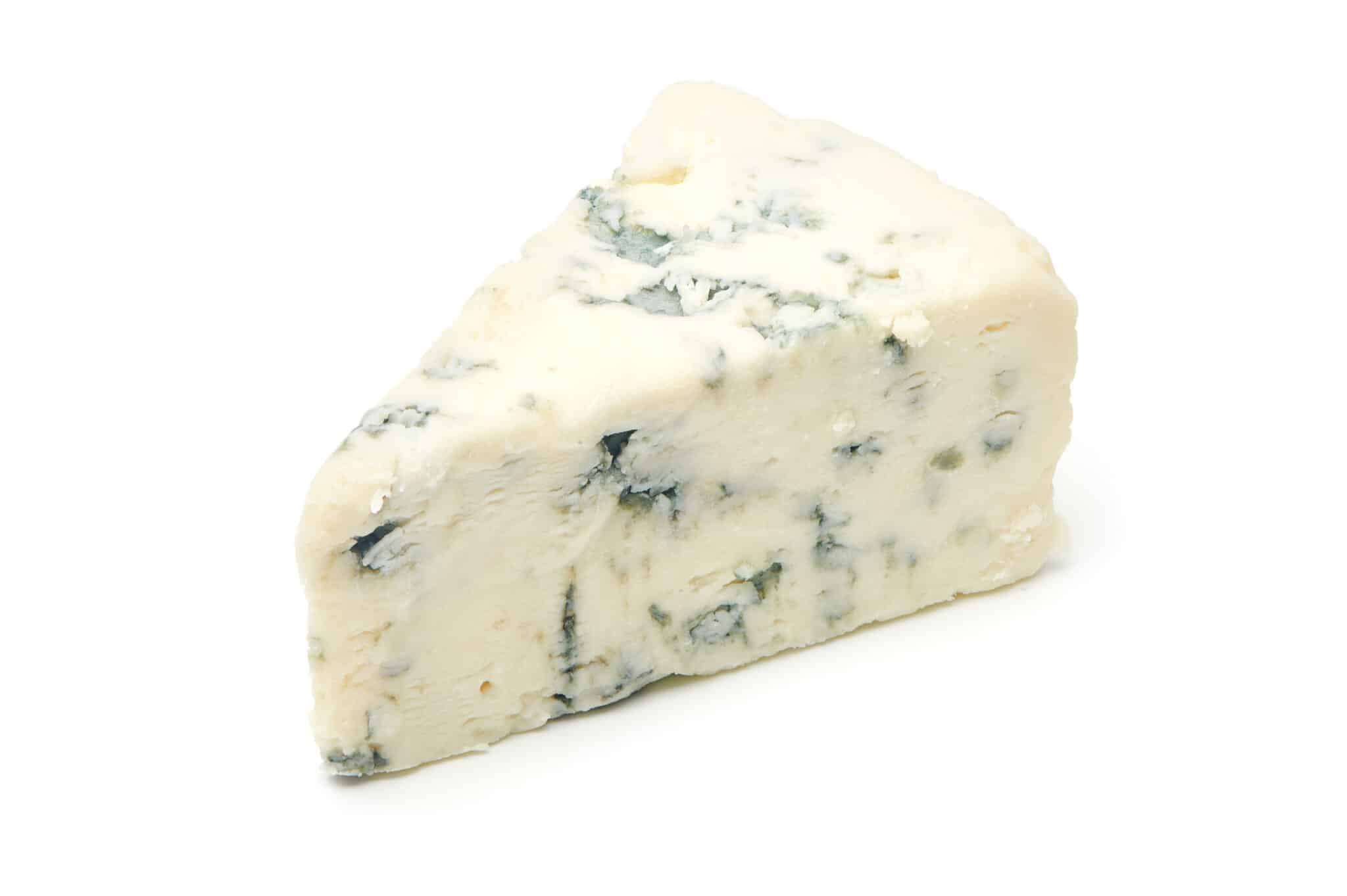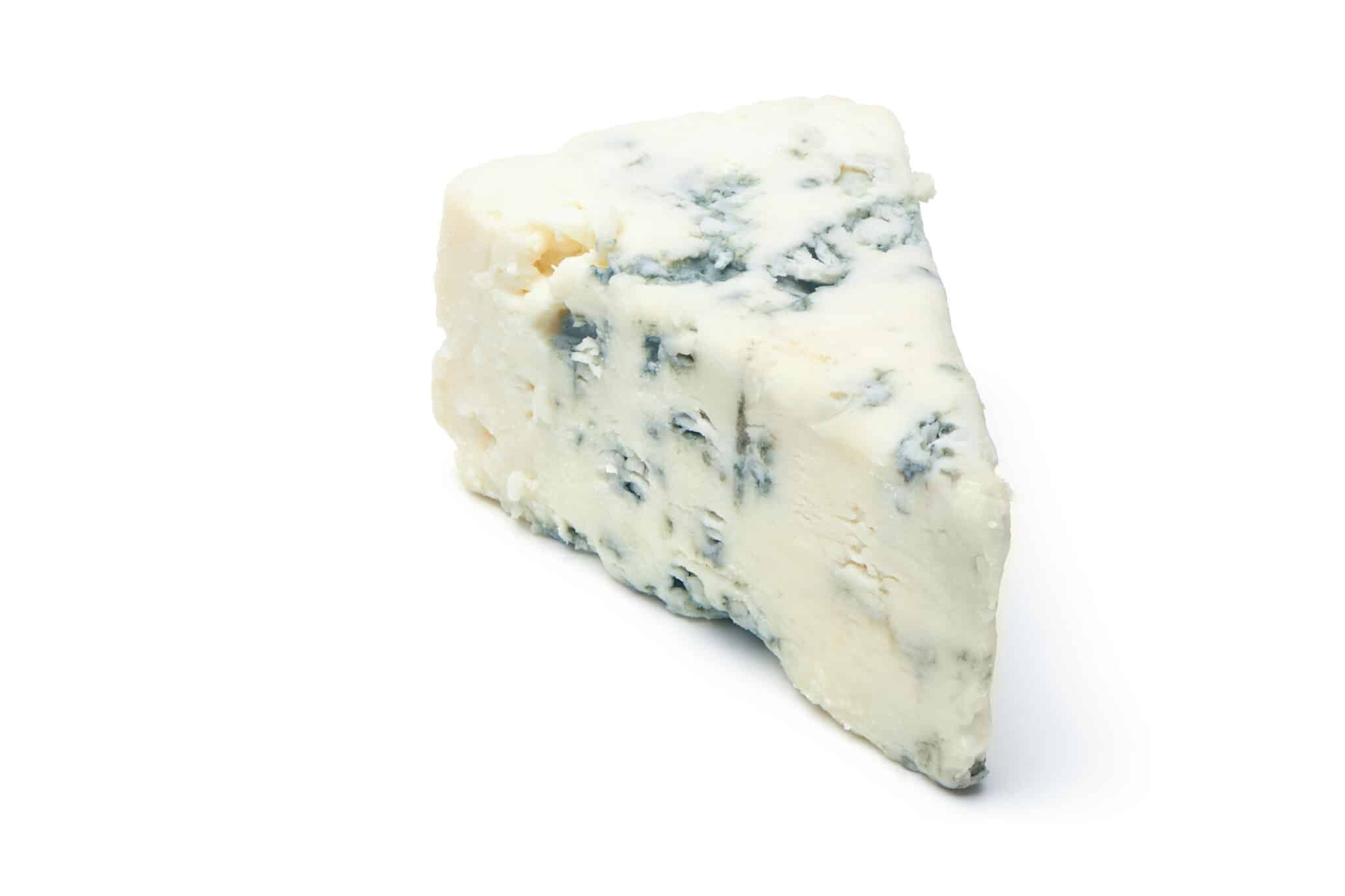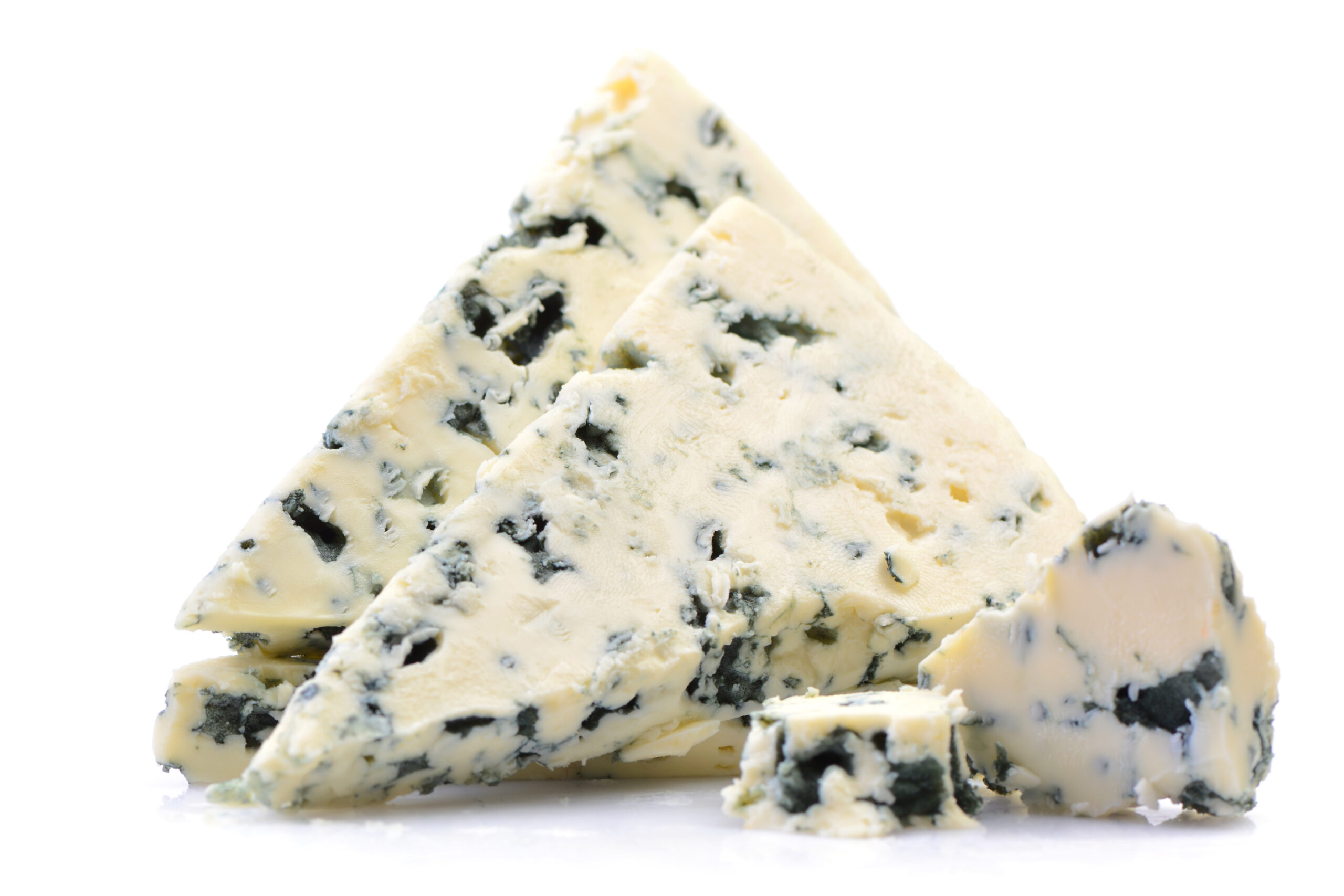You may be wondering what blue cheese tastes like, whether you are a cheese connoisseur or simply curious about its aroma and flavor. It doesn’t smell very delicious, unlike other cheese forms. Blue cheese (sometimes known as bleu cheese) is a semi-soft, salty cheese. It’s created with cultures of the edible mold Penicillium, which give it blue or green spots or veins throughout the cheese.

Blue cheese is a striking off-white tint rather than a true blue. It has a particular aroma and flavor similar to toasted hazelnuts with chocolates. Gorgonzola Dolce, for example, is a rich and creamy blue cheese with a faint acetone flavor. While some people dislike the taste of blue cheese, others have been turned off by a bad experience.
What is blue cheese?
Blue cheese is made from cow, goat, or sheep milk that has been cultured and molded with Penicillin. Blue Cheese is also known as Blue Vein Cheese, and the blue tint of Blue Cheese makes it easy to identify. Blue cheese is technically blue, but it can also be green, grey, or black.
Blue cheese is white on the outside but contains blue, green-grey, or black veins running through it. Because you spike the cheese to allow oxygen to mold, these veins appear in the cheese. There are more than 50 different types of blue cheese on the globe, and Gorgonzola Dolce from Italy, Stilton from England, and Roquefort from France are some of the most famous blue cheeses.
When blue cheese is still fresh, you can smell it, and when it has gone bad, you can smell it. Fresh blue cheese is often crisp, but it gets biting as it ages. You should expect a more savory or sweeter taste depending on its age. With your local cheesemonger, you can also inquire about the more nuanced and peppery varieties. These will be harder to come by in your local supermarket, but your cheesemonger should be able to help you out.
What does blue cheese taste like?
Blue cheese has a strong flavor that is salty and harsh. However, it can also be sweet. The texture is semi-soft, crumbly, and creamy. It goes well with fruits and nuts, and it may be made into sauces or salad dressings (a popular vegetable dip is blue cheese dressing). It has a silky texture and a rich aroma of forest nuts, grass, and mushrooms. Blue cheese is a peppery, creamy, crumbly cheese that can also be nutty and sweet. Blue cheese should never be sour or bitter.
All of these blue cheeses have distinct flavors and aromas. Some of the most well-known are:
- France’s Bleu d’Auvergne. It has a lovely perfume and a flavor that reminds me of toasted hazelnuts with chocolate.
- Italian Gorgonzola Dolce has a luscious, creamy texture and a milky aroma. It has a moderate flavor and is quite sweet to the mouth.
- Spain’s Monte Enebro. It may not technically be a blue cheese, but cheese connoisseurs regard it as such because of its blue-colored mold. It has a cake-like texture and a lemon flavor that is sweeter and milkier than lemon.
The nutritional benefits of eating blue cheese, according to Health Benefits Times, are as follows:
- It aids in the prevention of obesity. Blue cheese consumption aids in the reduction of body fat.
- It aids in the treatment of heart issues. Blue cheese contains germs that help your body maintain a healthy heart.
- It aids in the development of your bones. Blue cheese is high in calcium, which helps to preserve bone health and reduce joint pain.
- It helps to strengthen your immune system. Blue cheese is high in vitamins and minerals that help to boost your immune system.
- It is beneficial to your dental health. The calcium in blue cheese strengthens your bones and strengthens your teeth.
100 grams of blue cheese, according to the USDA, contains
- 350 calorie diet
- Fat content: 25 g
- Cholesterol: 70 mg
- Sodium (1300 mg)
- 2 grams of Carbohydrate
- Protein Content: 20 G
Calcium, Vitamin A, Cobalamin, Vitamin B-6, and Vitamin D are all in blue cheese.
Types of blue cheese
1. Roquefort
Despite the differences between Roquefort and blue cheese, Roquefort is the original and most well-known French variant that gives rise to other varieties. Sheep’s milk is used to make it. It has a crumbly, semi-hard texture, and the interior is rather damp. It has a tart, spicy flavor with bitter undertones from the mold. It is, however, more powerful and complicated than that. It features burnt caramel-like sweet tones and short notes from the blue mold.
2. Gorgonzola
Gorgonzola is a well-known blue cheese from Italy. When fresh, it is creamy, but as it ages, it becomes soft and crumbly, making it great for salads, pasta, pizza, and risotto toppings. It’s also a pretty gentle strain. The flavor is salty, buttery, and earthy, with a touch of sweetness from cow milk. You can recognize the difference between Gorgonzola and blue cheeses by their taste, and Gorgonzola cheese has a distinct flavor that is difficult to ignore.
3. Stilton
The flavor of this English cultivar is deep and robust. The flavor is buttery, salty, and nutty. When you taste it, you’ll detect some spicy undertones. After Gorgonzola, Stilton is one of the greatest possibilities for blue cheese substitutes due to its pleasant flavor. It has a creamy texture and a crumbly texture on the inside. Honey, walnuts, and apples are all good combinations.
4. Cabrales
Cabrales is a Spaniard. It has a distinct flavor from other types. It has a salty and peppery flavor. It can have acidic undertones that go well with sweet foods like honey, jam, and figs. Cabrales, like other types, has a smooth and creamy texture. Normally, cow’s milk is used to make this kind. However, it can also be made by blending cow’s milk with goat’s milk and sometimes even sheep’s milk to produce a stronger and spicier blue cheese.
5. Danish Blue (Danablu)
One of the mildest blue cheese variants is Danish blue cheese. It is intended for complete beginners. It’s made in Denmark with cow’s milk. It has a creamy and smooth texture. It goes well with walnuts, fresh berries, pear, and citrus fruit because of its mild flavor. It’s also aromatic and sharp in detail. However, it is not overpowering and is kept at a low volume. You’ll also notice that it’s a little bit bitter. Pair it with pasta or steak sauce to make it even milder.
What is the best way to cook/Use blue cheese in recipes?
The greatest way to consume blue cheese is to eat it whole while drinking your favorite glass of wine. Blue cheese can be used in various ways in dishes, and it’s versatile and can be used in a variety of cuisines.
- To begin, make a salad with a blue cheese dressing, a popular option. You can make your salad with whatever fruits and vegetables you choose.
- This simple broccoli and blue cheese salad recipe are worth a try. Blue cheese is also delicious as a dipping sauce for nachos and buffalo wings.
- You can use blue cheese in your soups as an ingredient. They’re delicious and give your soup a pleasant scent. Blue cheese complements a variety of bread and lunches. When you grill your sandwiches, the melted cheese gives them a great look and flavor.
- Blue cheese is also a great addition to cheese tarts and pies.
- Food poisoning can occur if you consume spoiled blue cheese, with symptoms including nausea, diarrhea, and vomiting. It might also cause your body to have a lot of digestive issues.
- The best way to tell whether your blue cheese is spoiled is to look for pink, white, green, or grey fuzz growing on top of it.

Does blue cheese have a ranch flavour?
That’s okay! Both ranch dressing and blue cheese dip have the same appearance, texture, and nearly same flavor profile. Both of these dressings are made with dairy and have a tangy kick to them in addition to a cooling impact against the heat. Dill, chives, and other pungent herbs are mixed into ranch sauce and served over a tangy buttermilk base, giving the ranch its signature zing.
When it comes to blue cheese, how Long does it last?
Blue cheese, like any other food, can go awry. However, if a slice of blue cheese is not maintained properly, molds can grow and produce aflatoxins and mycotoxins, which are harmful to our health. Even though blue cheese is created from safe edible fungus, it can still go wrong.
If the cheese is not kept at the proper temperature, it will acquire harmful bacteria and become a health hazard when consumed. You should not store the cheese in an airtight container like other foods. Because the surface of the cheese contains living microorganisms, you should wrap it in cheese paper or aluminum foil first, then cover it with plastic wrap and store it in the refrigerator. The cheese will last around 3-4 weeks this way.
However, if the cheese is left out in the kitchen or room without being refrigerated, it will only survive 3 to 5 days before bacteria begin to grow. Blue cheese is a little more difficult to store than other milk products.
Blue cheese can also be kept in the refrigerator freezer to extend its shelf life and improve quality. If you want to keep the cheese for a longer period, put it in the fridge. You can keep the cheese in the freezer for a year or two, but it’s best to eat it within six months of freezing it for the best quality and taste.
Blue cheese shelf life
Here are some warning signs that your blue cheese isn’t safe to eat:
If the color of your blue cheese has begun to change, such as turning pink, green, brown, or blue, it has spoilt. Spoilage occurs when germs or hazardous molds grow on the cheese’s surface. Take into account the color of the cheese, as fresh blue cheese is usually green or blue in hue. Blue cheese’s creamy component should be beige, white, or slightly yellow. When blue cheese becomes stale, the texture of the cheese becomes hazy or oily. Because bacteria develops faster in warm temperatures, the texture of the cheese changes due to excess moisture.
Fresh blue cheese, in general, has a strong odor. However, as the cheese becomes stale, bacterial development causes it to smell like ammonia. It can be difficult to detect if your cheese has gone bad because it may not show any color or scent change signs. Take a small piece of cheese and taste it in that situation. If the cheese has an overpowering flavor, it is most likely rotten. When exposed to oxygen, the saturated fats in the cheese break down, making the cheese stronger.
Conclusion
Blue cheese is both delicious and nutritious. If you buy blue cheese from the store, make sure to eat it within three to four weeks. Your blue cheese will keep for a long time if you freeze it. Other forms of healthy cheese are available on the market, similar to blue cheese. Goat cheese, feta cheese, Gouda cheese, muenster cheese, and fontina cheese are a few examples.
The type of blue cheese you eat is significant, depending on your preferences. It tastes great, but it also has a fantastic flavor and scent. Even though blue cheese has a distinct flavor from regular cheese, it is comparable to other types. It will have a yellower or oranger color and a crumblier texture than the remainder of the cheese, and it has a texture that is distinct from other forms of cheese. Blue cheese is noted for its antibacterial effects in addition to its look.
